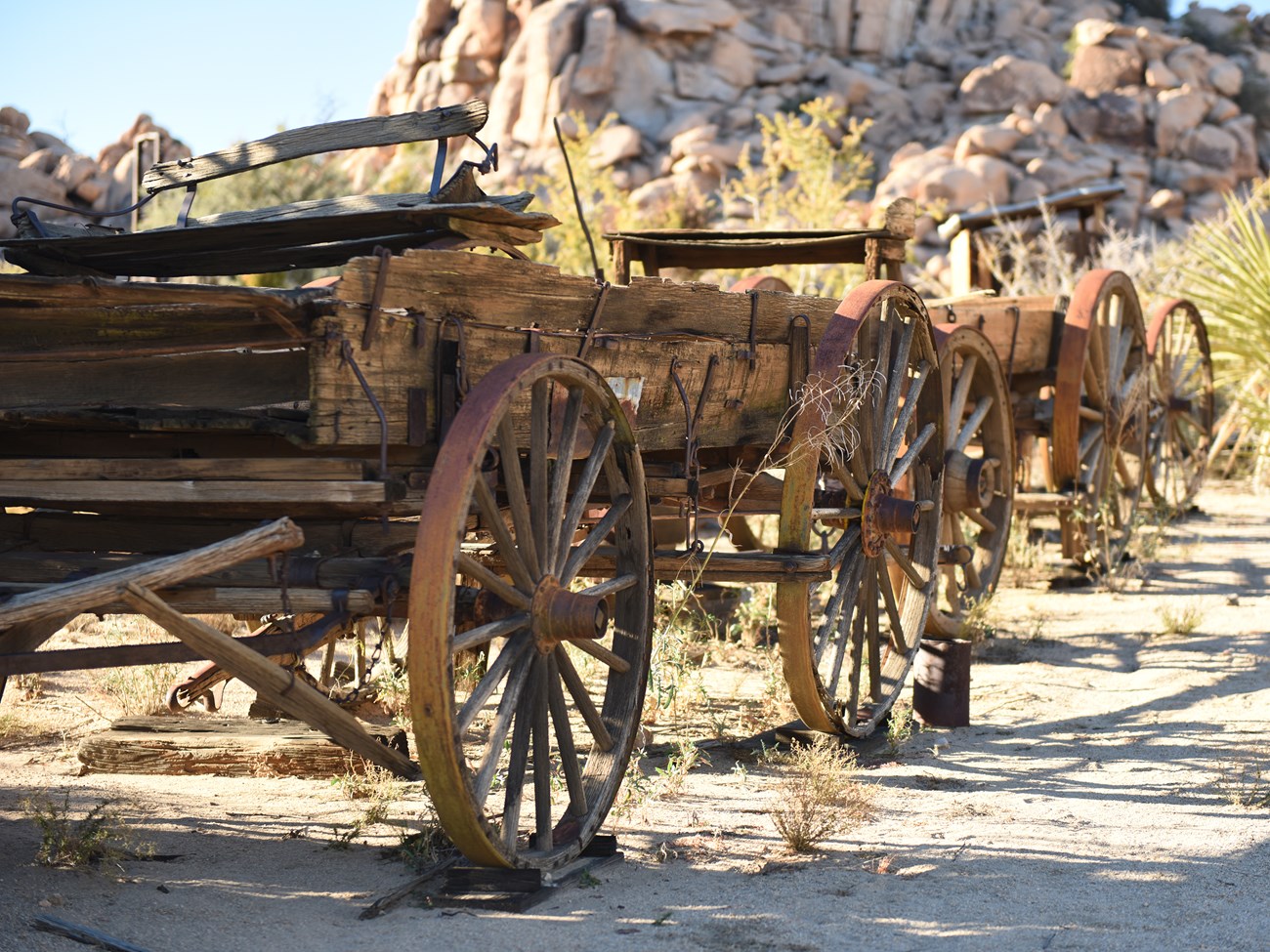Last updated: February 24, 2017
Article
Homesteaders

NPS / Hannah Schwalbe
The high years for homesteading in the U.S. were 1910-1920. Several wet years in the southwest, beginning in 1912, provided enough water to grow crops and attract people to the area. Later, because of hard times created by the depression, some people sought out a rural lifestyle where they could raise their own food without relying on unstable markets and inflated prices. During the 1920s, speculators advertised opportunities in the Mojave Desert, like mining. Some speculators took liberty with their advertising and stuck oranges on the ends of Joshua tree leaves, calling them desert oranges.
But the rains didn’t last. Several years passed with little or no rainfall and the crops failed. Homesteaders drilled water wells, but most were unsuccessful. In many cases water had to be hauled several miles even for household purposes. Conflicts between homesteaders and ranchers over water rights became common.
In 1938 a new type of homesteading, created by the Small Tract Act, allowed veterans to obtain land in the west for health reasons. Veterans of World War I, suffering the effects of chemical gases, like mustard gas, came hoping to benefit from the clean, dry desert air which was better for the lungs than the humid, polluted air of the East Coast. These small homes that sprung up around the Californian deserts are commonly called Jackrabbit Cabins. Veterans did not need to meet the requirements of the Homesteading Act to take advantage of the Small Tract Act as the act was created to meet the needs of people homesteading for health reasons.
Life in the desert presented challenges: Summers were extreme for those used to more temperate climates; the work was hard and neighbors far away. Few homesteaders met the challenge and only 40% were successful. Many farms and small homesteads were abandoned, leaving behind the tiny cabins which still litter the desert in some places. All in all, the Homestead Act converted 270 million acres of public land into private land.
One family that not only survived but thrived in the desert was that of Bill and Frances Keys. For more information about them, take a guided tour of their ranch.
Ryan Ranch is another successful Mojave Desert homestead. The Ryan family had the only truly running water pipes in what today is Joshua Tree National Park. You can visit their homestead on your own by hiking a half mile trail that begins near the Ryan Campground.
For more information about homesteading and the Homestead Act visit the Homestead National Monument webpage.
